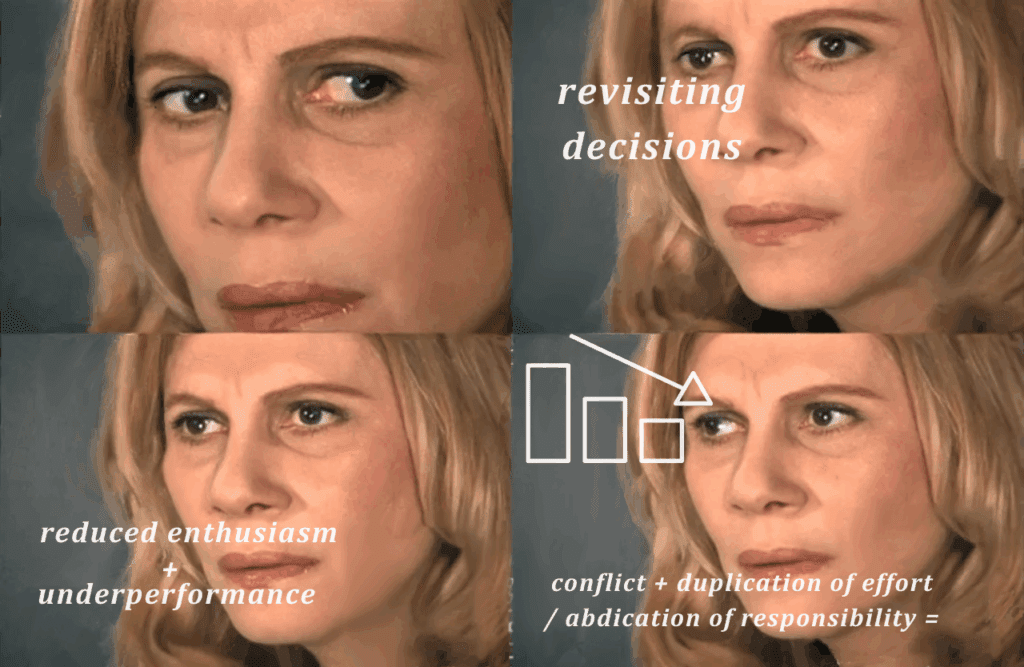Learning to Love Confusion

You know I talk a lot about clarity – strategic clarity – and how it’s essential to the impact your organization can have, as well as the health of your organizational culture. So why would I recommend a crush on confusion?
Because confusion is actually the first step to clarity. Or rather, it can be: if you can recognize that there’s confusion present in a group. Because sometimes we don’t even realize that we’re confused. We see what’s happening – no confusion! The trouble is we don’t see why it’s happening. Maybe there’s conflict, and we see it as a communication styles issue to work out and that’s that. Or maybe there’s great collaboration happening but we never quite make our targets, so we blame the market or we change the targets and that’s that. Meanwhile, maybe the conflict is fuelled by confusion around reporting relationships, but we don’t notice that, so we apply the communication fix only to discover further disagreement brewing just a couple weeks later. Maybe the underperformance is rooted in ambiguous language around goals and targets, with many different understandings of ideas like “excellence” or “priority”. So there’s actually no problem in the market, no need to modify targets, but oops too late that’s what we did because we didn’t check for confusion.
Even if you have recognized confusion, you might not feel crushy about it! OK you don’t actually need to crush, but you do want to celebrate your identification that confusion is present. Before you cultivate this kind of relationship to confusion, you might think of it as a state you can’t risk operating in for long, so you move quickly to sweep it away, to clear that fog. You might introduce a protocol, a new role or reporting relationship, a new meeting. You don’t take the time, or allow the spaciousness, for more careful consideration. But the thing is, confusion is … well … confusing! The likelihood that the quickest fix is also the true fix – that it’s accurately diagnosed the deeper truths in the situation – it’s not great likelihood, a lot of the time. Another meeting won’t help if you haven’t figured out that there’s a power dynamic keeping important input from being shared. A new role or reporting relationship can’t help a team whose problem is actually not fully understanding the specific contribution a project is making to a key strategic objective.
So let’s talk about how to recognize confusion in a group, and how to embrace it.
What Really Happened? Reframing Workplace Letdowns

Think of a time you felt let down by a co-worker or partner. It could be a relationship with hierarchical reporting, or a relationship without hierarchy.
What happened? Is your answer along the lines of “I needed something from this person and they didn’t provide it, or at least not sufficiently”?
But what really happened? To explore this, think of a time you learned that a co-worker or partner felt let down by you. Presumably they felt like you did when you were let down – they needed something from you and you didn’t provide it, or at least not sufficiently. But in this case, you know a lot more about what really happened.
Maybe you didn’t know they needed it.
Maybe you didn’t know the form or timing or quality in which they needed it.
Maybe you thought you knew, but you ended up being wrong.
Maybe under time constraint, and without ability to consult with this co-worker, you had to choose between competing priorities and you chose away from this one.
There is a very straightforward way of reducing these moments in your life, and I’m going to lay it out for you now.
